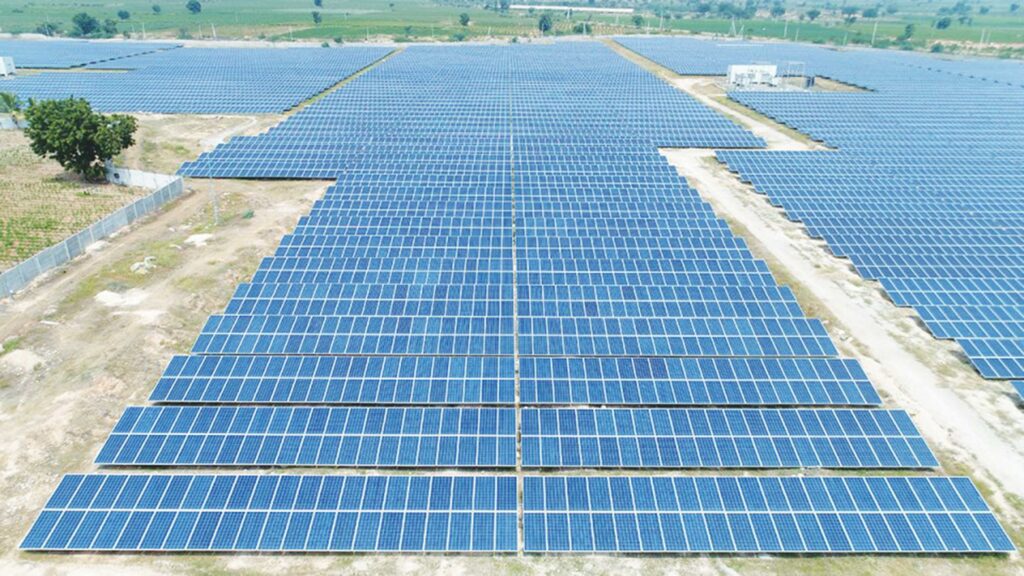
A solar plant is a capital-intensive business, as 95 per cent of the investment goes into building the plant while the operations & maintenance constitutes about 2%. Though O&M is a low-cost centre, the output generated from a solar plant and its return on investment are directly dependent on how well the plant is operated and maintained, says Tanya Singhal, Founder at Mynzo Carbon and SolarArise, a company that owns and operates large solar plants across India.
Solar system maintenance is all about ensuring the plant keeps running and generating electricity. Maintenance can be both regular and preventive. Regular maintenance includes cleaning of panels, ensuring all connectors are in place for power evacuation to grids and clearing of grass or shrubs that may shade the panels from the sun. Preventive maintenance, which is anticipating problems in advance, requires preemptive work. While regular maintenance is done daily and does not require much manpower, preventive maintenance needs data and AI to anticipate where a problem might occur and requires proactive & corrective measures.
Today the government is helping citizens get a subsidized installation on their roof top through the Pradhan Mantri Suryoday Yojana. The government aims to have one crore solar rooftops.
SolarArise is a large Independent Power Producer (IPP). It has seven plants which generate 500MW of electricity, enough to power 250,000 homes. These large-scale grid-connected plants use solar power, replacing coal as its source. The company buys land of about 1000 acres, populates it with solar panels and signs a PPA (Power Purchase Agreement) with either the Central or State government. It builds an evacuation line from the closest sub-station to the plant and generates power. For every unit of solar power, the government pays a fixed tariff as agreed in the PPA. The grid then distributes the power to consumers in villages, cities or industries.
Solar parks can have plants generating anywhere between 100mw to 500mw of power. A 100mw plant would need 1,000 acres of land, equivalent to 500 football fields. A rooftop solar system generating 1kw, conversely, can be accommodated in a 20sqm area. The variance in scale offers diverse maintenance challenges.

A solar park with thousands of panels may take at least a month to clean but a roof-top solution with 100 panels could take a day. Similarly, finding an electrical fault in a large plant could be very cumbersome, like looking for a needle in a haystack. While maintenance may be easier for a rooftop solution, it is usually in a populated area so issues like shading from nearby buildings or pollution would be more pronounced. Rooftop solutions work on net-metering requiring high maintenance.
Cleaning cycle also depends on seasons. During the months when there is heavy radiation, cleaning must be done every 10 to 15 days as it is a period of maximum output. During winter when there is low radiation, monthly cleaning is adequate. For a rooftop solution, the cleaning frequency will depend on pollution, pollen content, and area-specific factors.
Solar systems in open spaces like traffic signals are vulnerable to tweaking and damage. The output needs to be tracked daily to ensure it meets with what has been predicted. This can be done remotely by putting a small string inverter which, along with the panel, is a complete system on its own. Monitoring it remotely every day is essential so proper intervention can be made in case the output is not as expected. Regular cleaning and maintenance are also essential.
Solar panel technology has changed drastically over time. Initially, it was thin film which could barely generate 100w power. This was followed by polysilicon which could generate 150 to 200kw of power. Today, that same area of the module with mono silicon can generate up to 500Kw of power. The system size has condensed and since the panel generates more power, lesser number of structures, wires and land are required to get the same output.
In the future, efficiency is expected to improve with bi-facial panels where both sides can generate power. Technology advancements can also be seen in degradation. The panels have a 25-year life warranted by manufacturers, but they degrade every year. In the first year if the module generated 100 units of power, at the end of 25 years the module will be able to generate 80 units for the same amount of solar energy. Currently, better panels with limited degradation and continued efficiency are available. Research is also being done on monitoring the output panel-wise and AI is being made use of for maintenance. Robotic systems are used to spray water and clean panels, improving efficiency. They are capital intensive and also consumes power but gives better output.
 CIJConnect Bot-enabled WhatsApp
CIJConnect Bot-enabled WhatsApp









